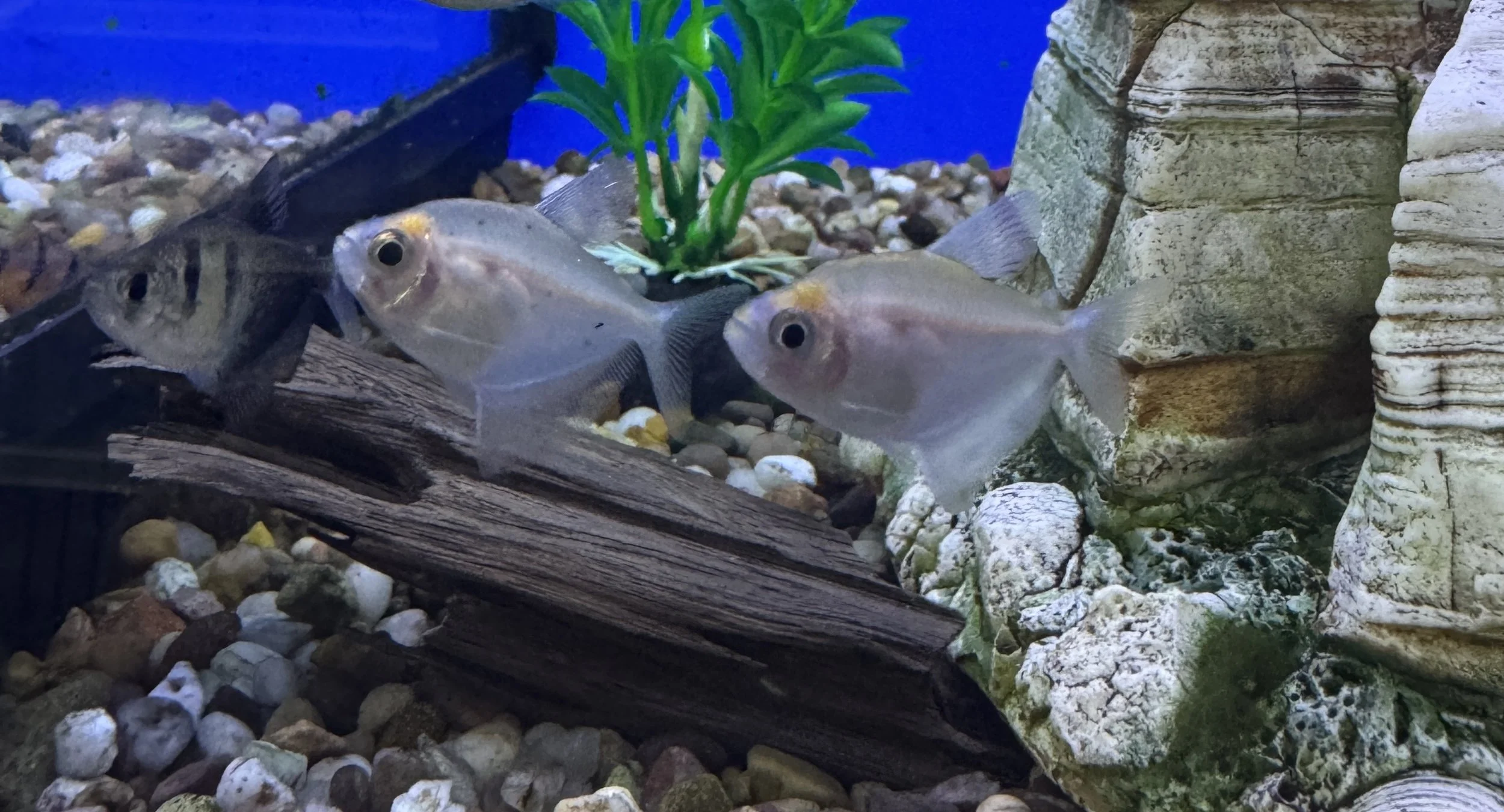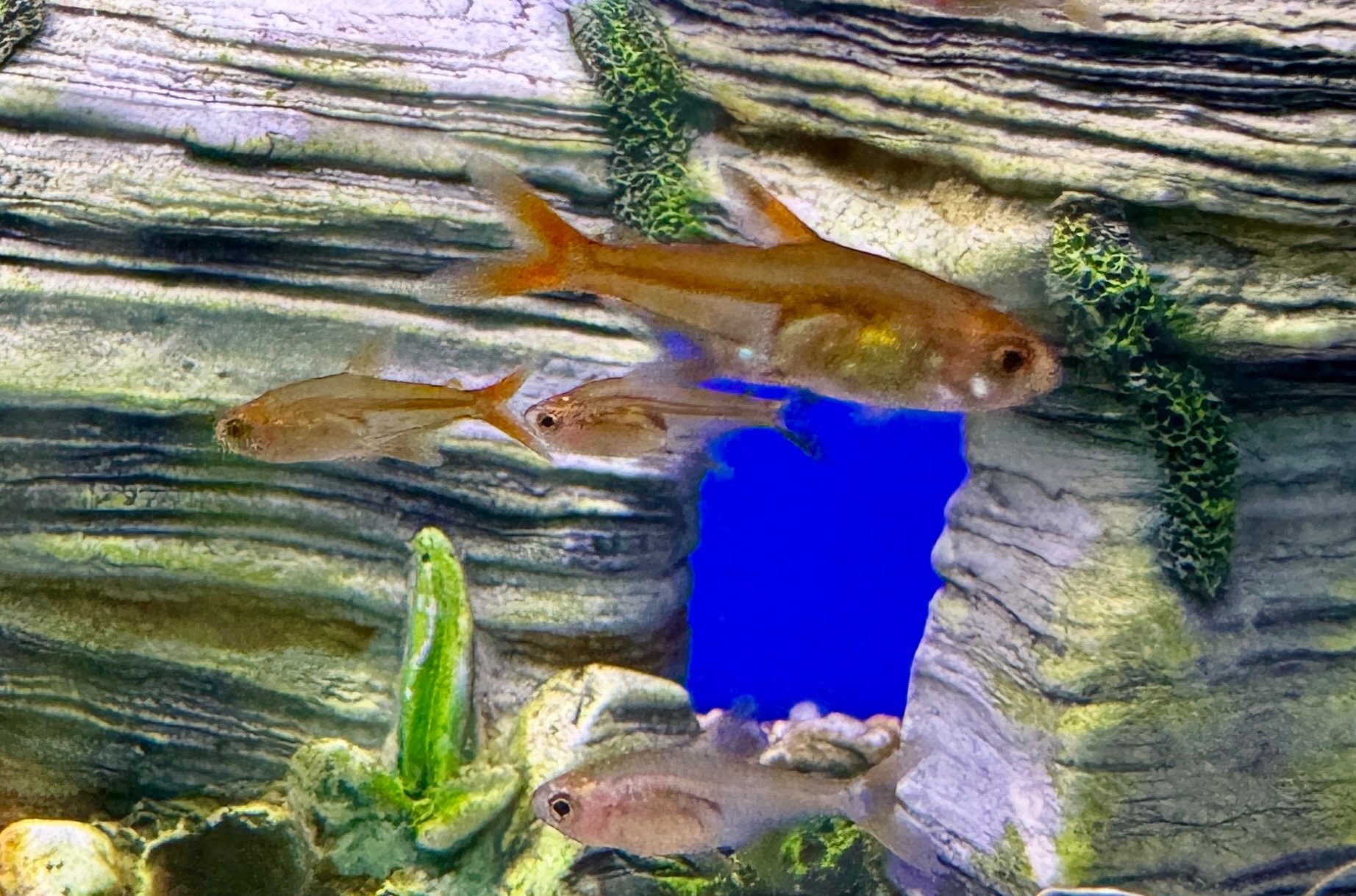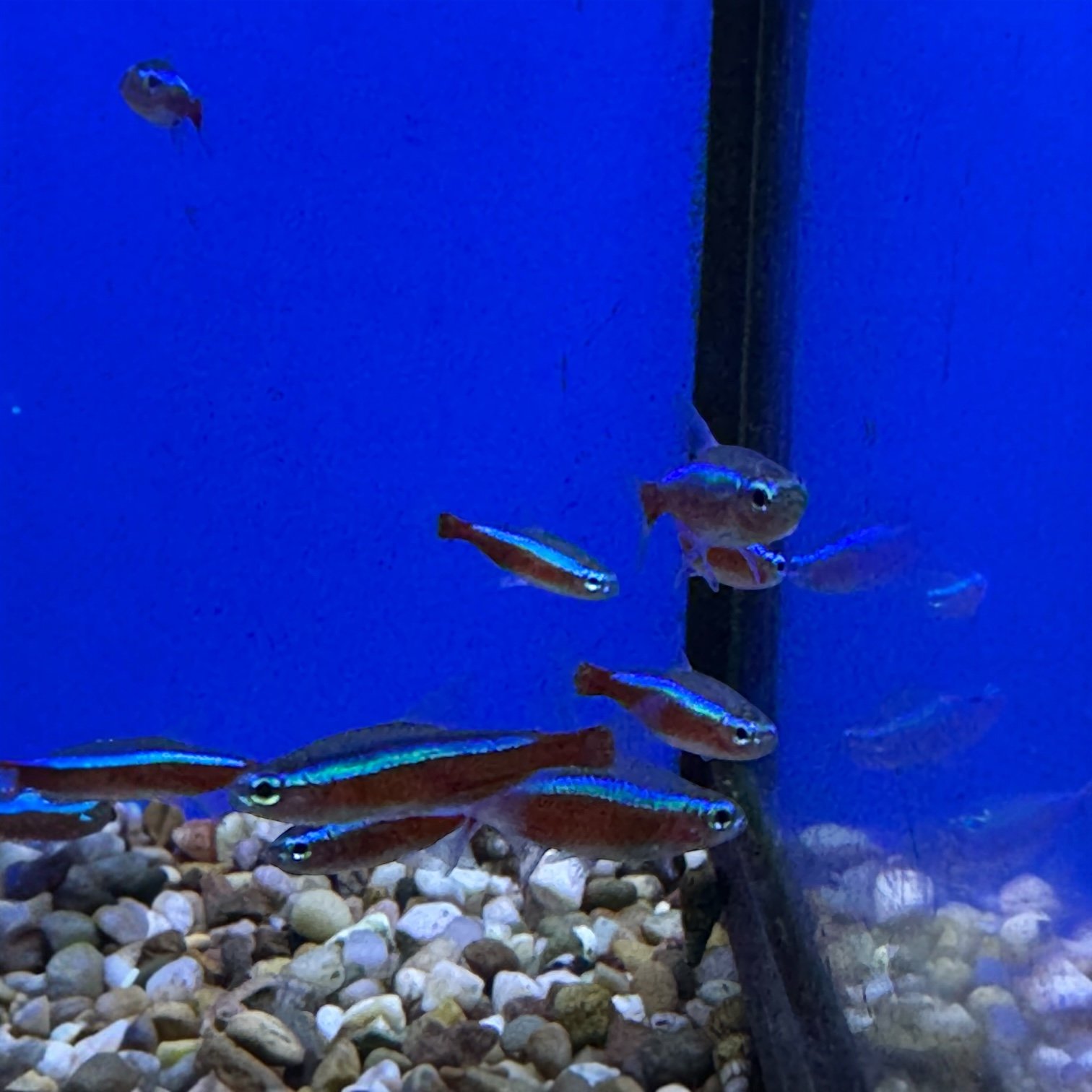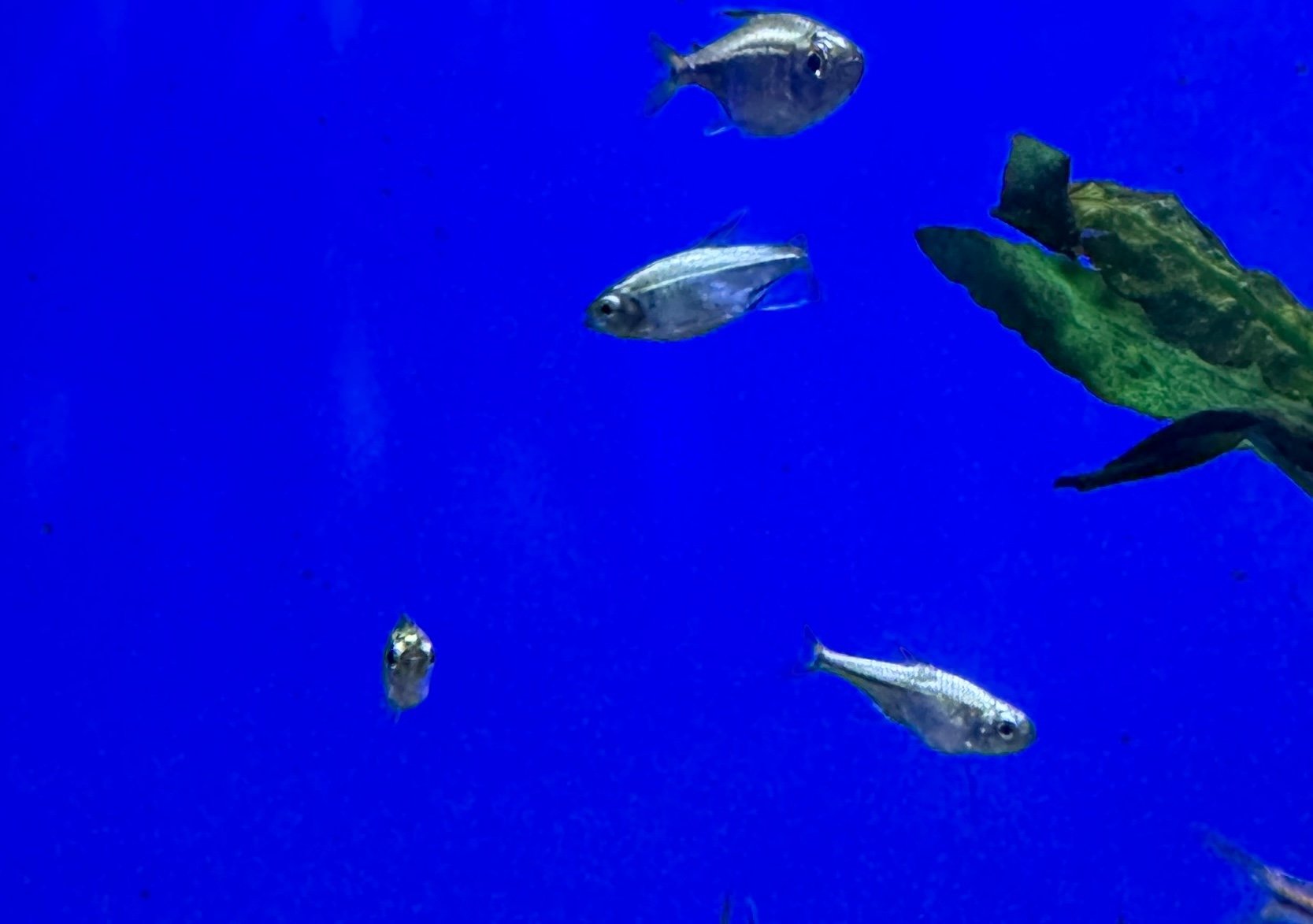The White Widow Tetra, also known as the White Skirt Tetra, is a selectively bred variety of the Black Widow Tetra (Gymnocorymbus ternetzi). This stunning fish is characterized by its predominantly white body with a faint, silvery sheen, making it a striking and elegant addition to any freshwater aquarium. The white coloration is a result of selective breeding, which has produced a variant that lacks the black edges on the fins that are typical of the wild Black Widow Tetra.
White Widow Tetras are highly social and thrive in schools. Keeping them in groups of six or more not only enhances their natural beauty but also reduces stress and promotes a more active and engaging tank environment. They are known for their lively and energetic behavior, often swimming in the middle to upper levels of the tank.
These tetras are relatively easy to care for and can adapt to a wide range of water conditions, making them suitable for both beginners and experienced aquarists. They are omnivorous and will readily accept a variety of commercial fish foods, including flakes and pellets. Supplementing their diet with live or frozen foods like brine shrimp and bloodworms can help bring out their best colors and ensure optimal health.
While generally peaceful, White Widow Tetras can sometimes exhibit nippy behavior, especially towards slower-moving or long-finned fish. Therefore, it's best to avoid keeping them with species like bettas or angelfish. Instead, they do well with other peaceful community fish such as neon tetras, Loaches, and corydoras catfish. A well-planted tank with plenty of open swimming areas and hiding spots is ideal for these tetras. They also benefit from a gentle current, which mimics their natural river habitat.
Breeding White Widow Tetras can be a rewarding experience. They are egg scatterers and will lay their eggs on fine-leaved plants or spawning mops. The eggs hatch in about 24-36 hours, and the fry are free-swimming a few days later. A separate breeding tank with optimal conditions and minimal predators is recommended to ensure a higher survival rate for the fry.
Overall, the White Widow Tetra is a beautiful and low-maintenance addition to any freshwater aquarium, bringing both activity and a striking appearance to your aquatic environment. Their hardy nature and adaptability make them a valuable and enjoyable part of any community tank.
The White Widow Tetra, also known as the White Skirt Tetra, is a selectively bred variety of the Black Widow Tetra (Gymnocorymbus ternetzi). This stunning fish is characterized by its predominantly white body with a faint, silvery sheen, making it a striking and elegant addition to any freshwater aquarium. The white coloration is a result of selective breeding, which has produced a variant that lacks the black edges on the fins that are typical of the wild Black Widow Tetra.
White Widow Tetras are highly social and thrive in schools. Keeping them in groups of six or more not only enhances their natural beauty but also reduces stress and promotes a more active and engaging tank environment. They are known for their lively and energetic behavior, often swimming in the middle to upper levels of the tank.
These tetras are relatively easy to care for and can adapt to a wide range of water conditions, making them suitable for both beginners and experienced aquarists. They are omnivorous and will readily accept a variety of commercial fish foods, including flakes and pellets. Supplementing their diet with live or frozen foods like brine shrimp and bloodworms can help bring out their best colors and ensure optimal health.
While generally peaceful, White Widow Tetras can sometimes exhibit nippy behavior, especially towards slower-moving or long-finned fish. Therefore, it's best to avoid keeping them with species like bettas or angelfish. Instead, they do well with other peaceful community fish such as neon tetras, Loaches, and corydoras catfish. A well-planted tank with plenty of open swimming areas and hiding spots is ideal for these tetras. They also benefit from a gentle current, which mimics their natural river habitat.
Breeding White Widow Tetras can be a rewarding experience. They are egg scatterers and will lay their eggs on fine-leaved plants or spawning mops. The eggs hatch in about 24-36 hours, and the fry are free-swimming a few days later. A separate breeding tank with optimal conditions and minimal predators is recommended to ensure a higher survival rate for the fry.
Overall, the White Widow Tetra is a beautiful and low-maintenance addition to any freshwater aquarium, bringing both activity and a striking appearance to your aquatic environment. Their hardy nature and adaptability make them a valuable and enjoyable part of any community tank.






